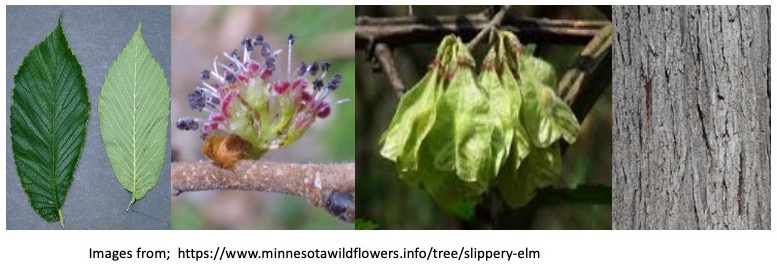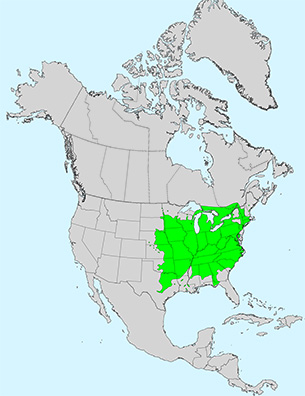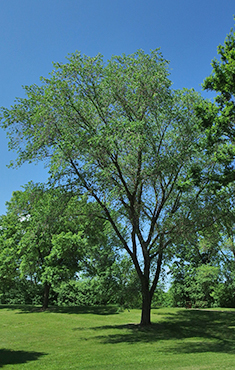Ulmus rubra
The slippery elm is native to eastern North America.
The slippery elm is similar to the American elm in appearance but is less statuesque and was not as widely planted as the American elm. Although both are vulnerable to Dutch elm disease, the slippery elm was not as densely planted so was not as dramatically impacted by the pathogen.
The leaves are simple with asymmetric bases and doubly toothed margins, and have a rough upper surface. The plant produces small flowers that develop into small flattened fruits called samaras. The Latin name (Ulmus rubra) derives from the buds being covered with rust colored hairs, or the heartwood having a red color.

The slippery elm is notable for its important medicinal uses, from which it derives its name. The inner bark contains a sticky slime that has mucilage properties (therefore slippery). The inner bark has been used to treat dry sore throats, as the mucilage helps coat inflamed tissues and reduce irritation. It has also been used as an external application to wounds and burns. The Ojibwe used an infusion of roots as a wash for cleaning cuts, and an infusion of leaves was used to treat stomach issues. They also used the inner bark to treat sore throats, while the Dakota used a decoction of the inner bark as a laxative.
https://pfaf.org/user/Plant.aspx?LatinName=Ulmus+rubra
Native American Ethnobotany Database. BRIT. (n.d.). http://naeb.brit.org/.


